One gun that has always seemed very interesting to me is the so-called Howdah pistol. The history is rich and it was originally created to serve as a last-ditch effort from attacking animals whilst on the hunt. The name of the gun originates from the use of the Howdah – or rather the carriage if you will – placed atop an elephant while hunting. These were quite popular for hunting in India especially during the late 19th and into the early 20th century. The need arose after, one must assume, a few hunters were plucked from their howdahs by angry tigers! The hunter needed a way to defend himself quickly and easily – much more so than a long barreled rifle could provide. H. A. Leveson is quoted in regards to the howdah pistol, “to be effective, the muzzle must be placed close to the tiger’s head, and care must be taken not to kill the mahout.” The mahout was the one who would lead or tend the elephant and was generally the first to be attacked by a tiger.
These guns started out merely as cut-down, out of use rifles. Therefore, it is typical to see them using rifle cartridges that have also been trimmed. The original howdah pistols could be smooth or rifle bored guns; although I’m sure many of them were built from rifles that had seen their rifling deteriorate through heavy use; making them nearly useless for accurate shooting. Because of the close range use, long distance accuracy was not a requirement! Over the years, I have seen a few of these that were of the original variety and, although they were not pretty, I’m sure they were able to get the job done! It wasn’t until the middle of the 19th century when the English makers started producing guns specifically meant for howdahs – or merely a defense type gun that could be worn on one’s belt. All of the big names – Westley Richards, Holland & Holland, and Purdey – made these types of Howdah pistols. They were also naturally produced by much smaller firms and probably cobbled together in India, as well.
Peterson and Elman in their book, “The Great Guns,” reference a variety of howdah pistols. One of the earliest mentioned in their book is “made by Westley Richards between 1835 and 1850, [and] was a caplock with a heavy, octagonal, .722 caliber barrel.” Obviously this was one of the earliest Howdah pistols manufactured, before the demand really took off. Through the natural evolution of cartridges, the howdah pistol was later manufactured using pinfire and then centerfire cartridges. As stated earlier, many of these were merely shortened version of their rifle counterparts or would otherwise employ cartridges such as the 577 Boxer which was developed by William Tranter of Birmingham or, later on, the more common 455 Webley.
I have seen many of these howdah pistols over the years and quite a few of them go through the major auctions. It’s quite often that they are found cased or in pairs; especially those of the nicer variety that were most likely bespoke. Many of them are very similar having side by side barrels and an underlever; though occasionally one will see something unique such as an over/under with a side lever like Lancaster made. Perhaps not serving much of a true purpose these days, I still think they are typically great values if one is interested in the history or possible providence of these types of guns. As some would say, “if only these guns could talk…”



 Enquire
Enquire







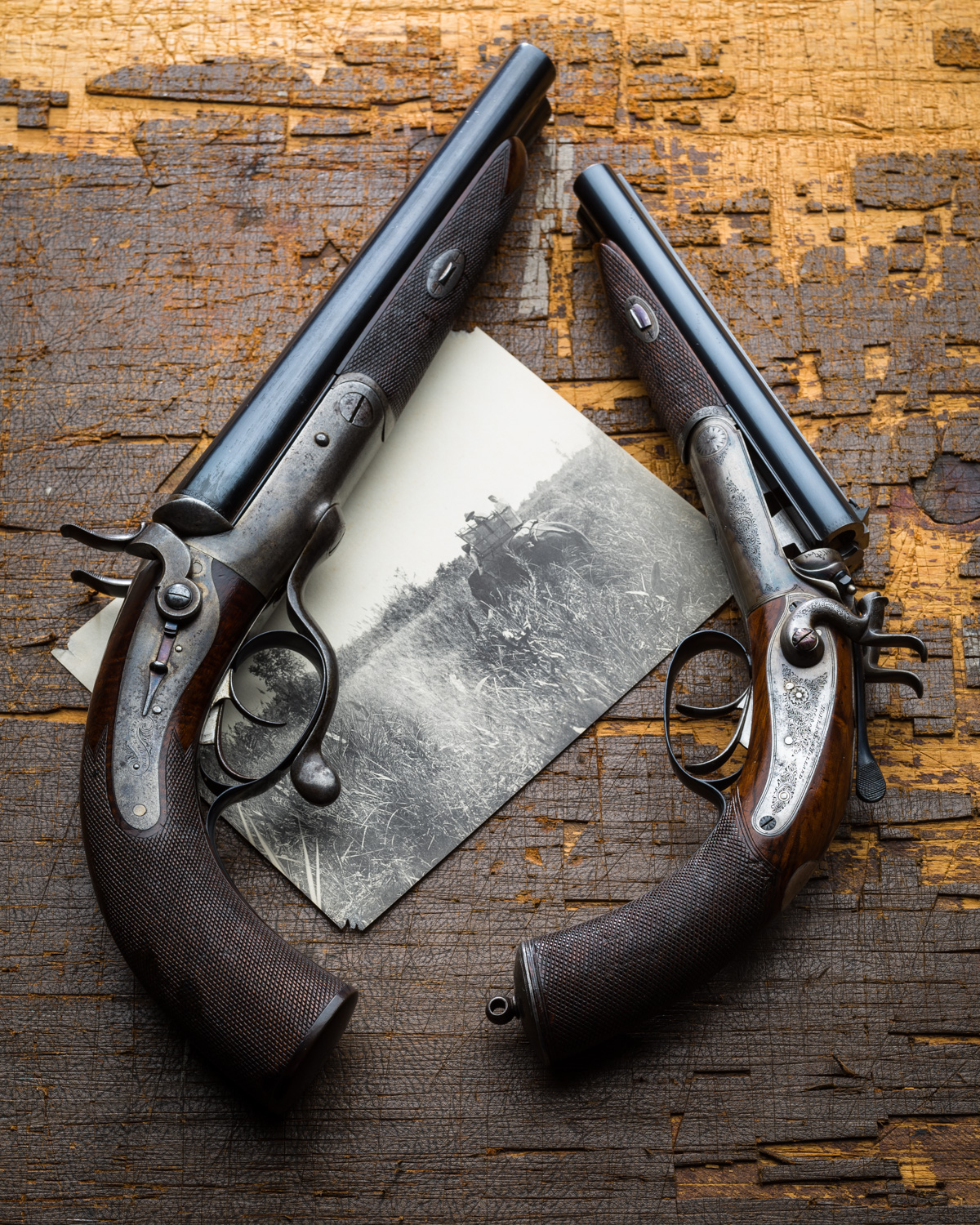
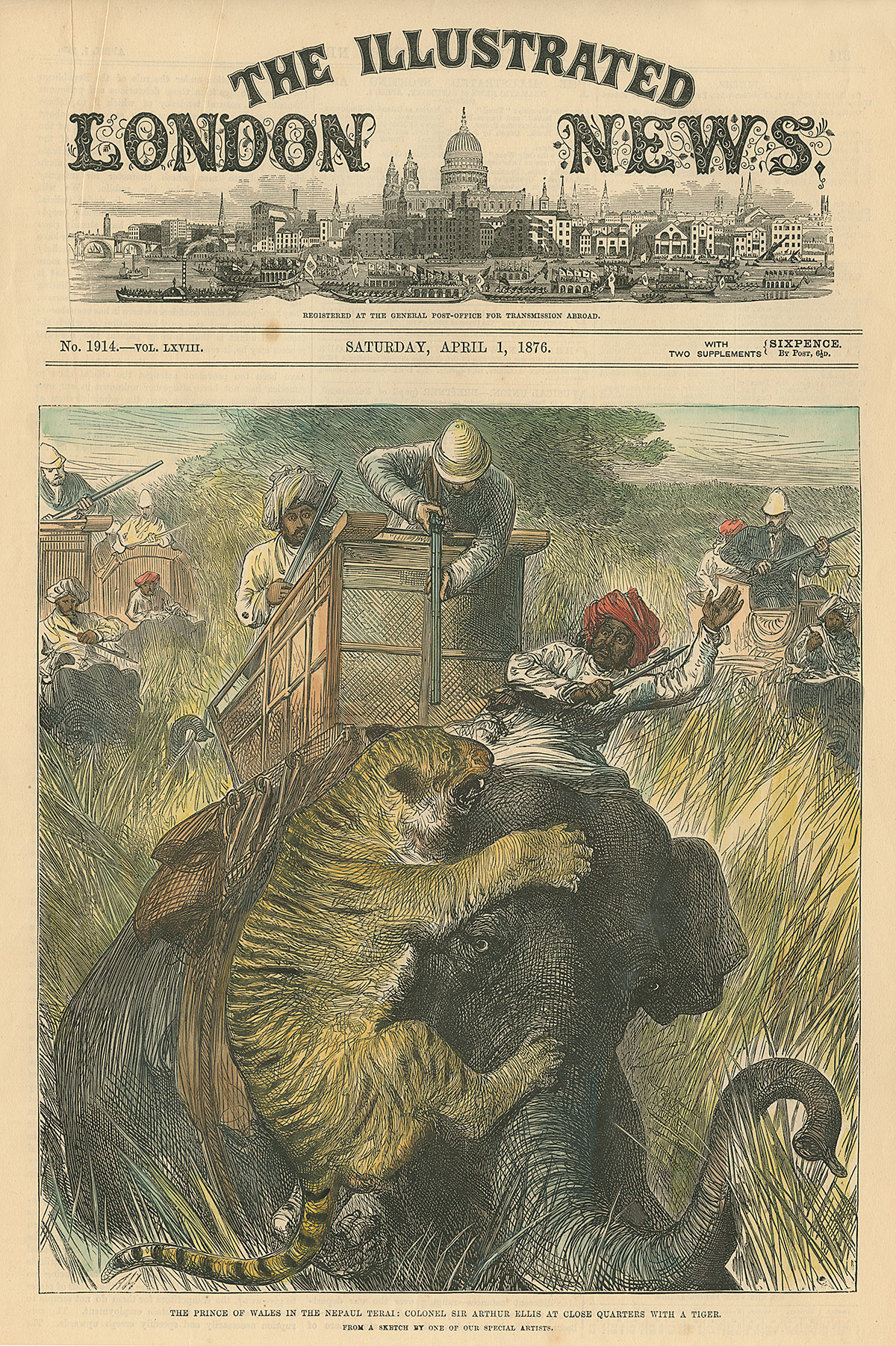
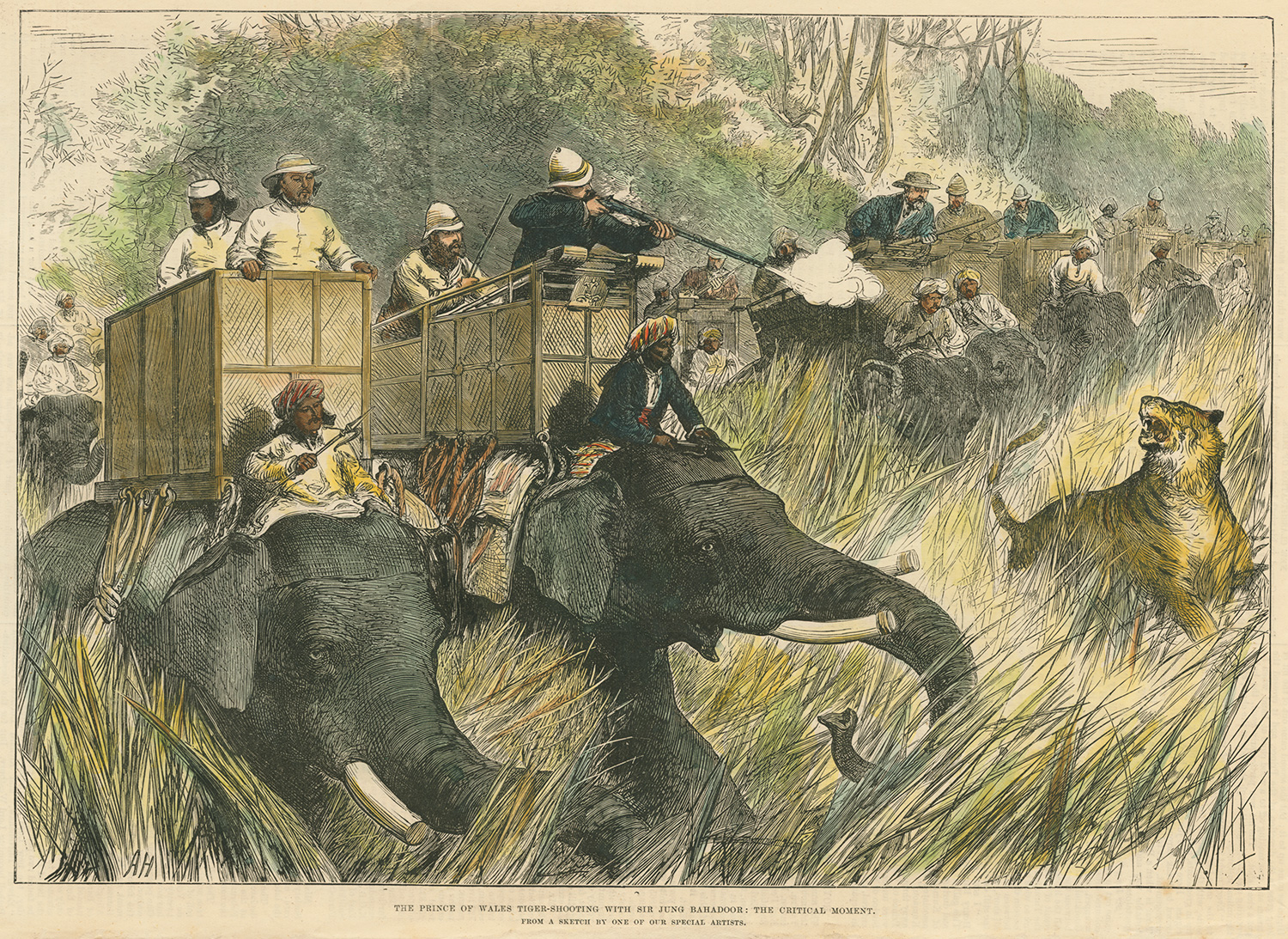
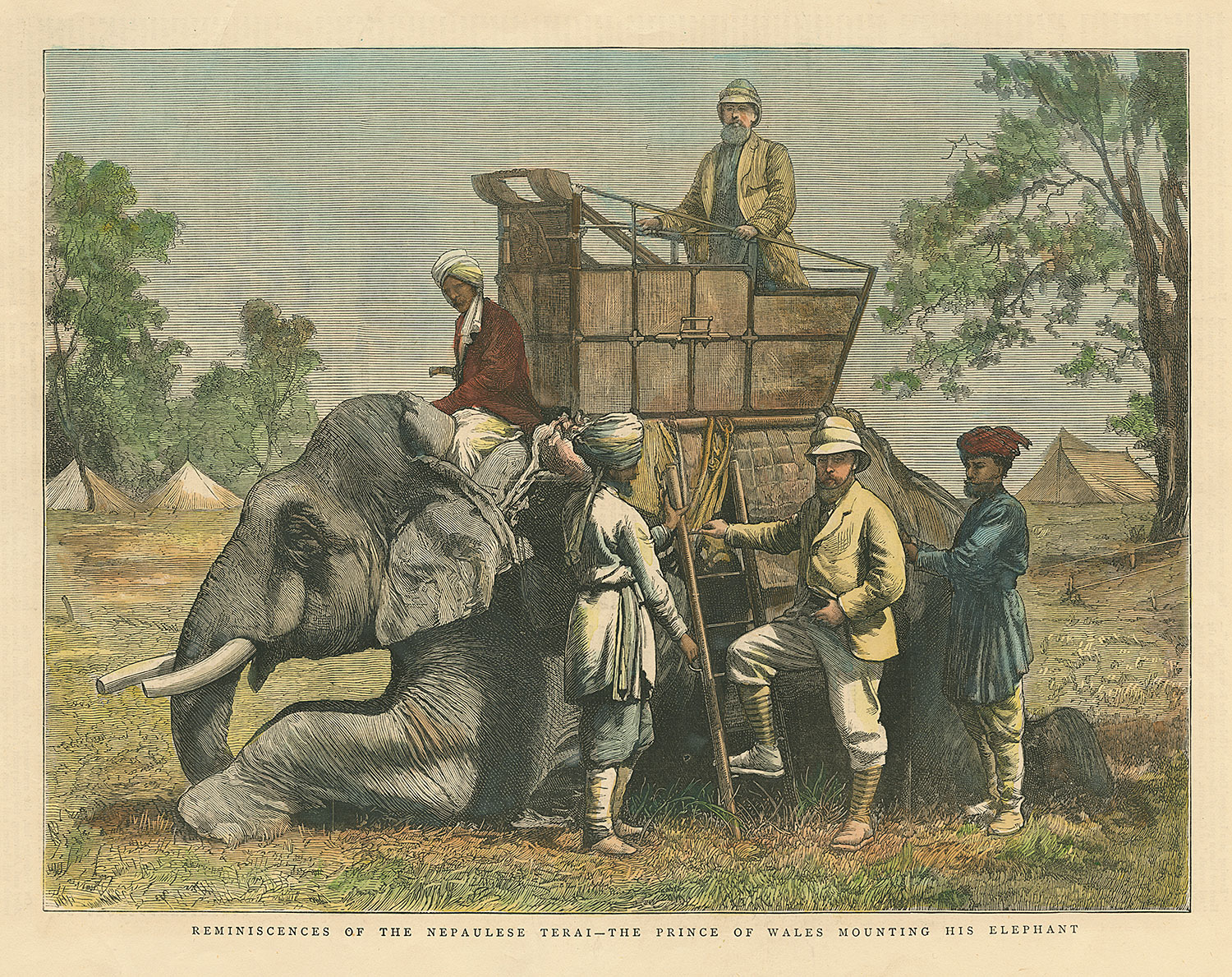


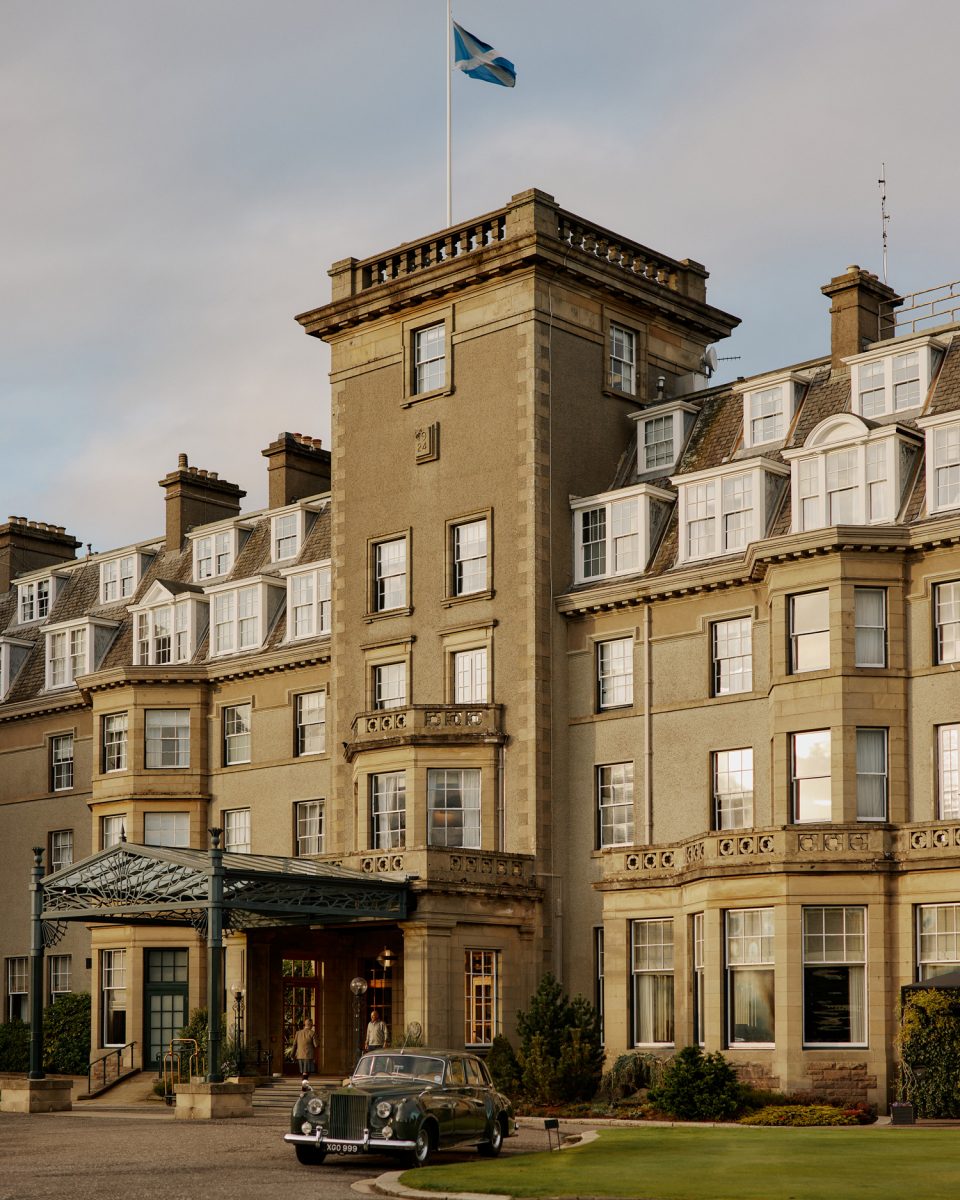
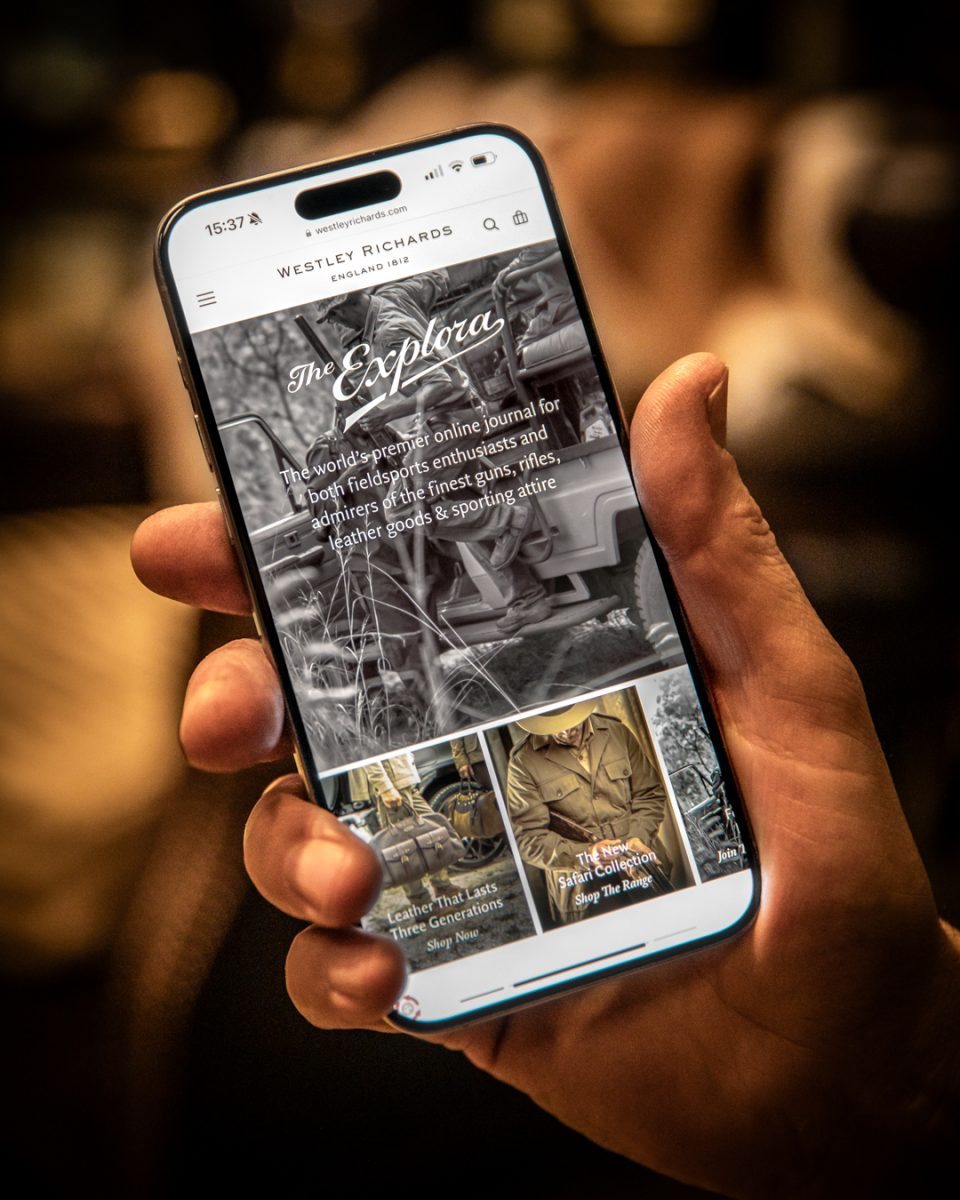


Tim Wilkes on April 22, 2016 at 11:02 am
The gun of last resort! Given that to fire these hand cannons must have 'hurt', I dare say that in the heat of the moment and with the breath of the beast on your cheek, you didn't notice the kick!
Nice article, thank you.
Tim
Neill on April 22, 2016 at 7:42 pm
Thanks to Larry to for the article. Who'd be a Mahout on a Tiger hunt? Looking a photos of the real thing, even assuming they did not get chomped by an angry Tiger, they probably had an express rifle discharging just behind them! I've been about a foot behind a .270 going off, and even with ear protectors it's not an experience I'd willingly repeat. A different era.
Matthew Schmidt on April 22, 2016 at 9:59 pm
Interesting article with great drawings.
Matt Schmidt.
.577 Double Barrel Howdah Pistol - Revivaler on April 24, 2017 at 11:42 am
[…] And for those who’d like to read a bit more about adventures involving a howdah pistol and a tiger you might like Larry Blunk’s post called “The Howdah Pistol – Built for the Final Charge.” on The Explora.com which you’ll find if you click here. […]
Dreamhawk on March 21, 2022 at 5:09 am
I love my 20x20 gauge Howdah Hunter! I will say though that 1) it kicks like a Missouri mule, and 2) sounds like a lighter caliber cannon! Between these two, I've nicknames her thunder. I normally load what's called a"buck-n-ball load for self protection from 4 or 2 legged predators. Immune, this is a .62 Caliber (324 grain)lead round ball, followed by a full 1⅛ ounce (17) #2 buck shot. Thankfully, the butt has a cap that is a heavy counterweight. This helps to manage the punishing recoil a little bit. I do love my Howdah, and take great joy in blowing targets to smithereens. I would definitely hate to be on the receiving end of one of my buck-n-ball loads. Sic em Thunder!
Josh in PA on July 28, 2024 at 5:21 am
A fine short essay, with excellent art, thank you.